#The Scythian Lamb
Explore tagged Tumblr posts
Text
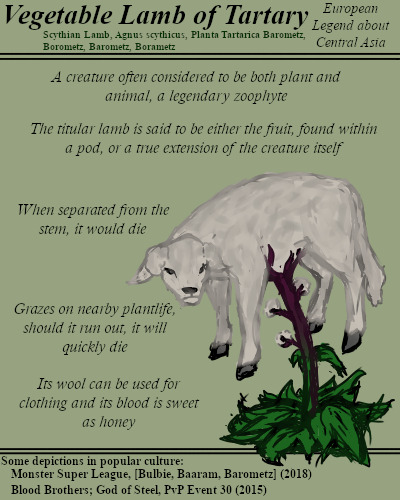
A perplexing mythical lamb, this medieval beast was a legend about an area of the world that Europe knew little about at the time. The vegetable lamb itself was a product of the, as of then, many unknowns.
#BriefBestiary#bestiary#digital art#fantasy#folklore#legend#myth#mythology#monster#zoophyte#vegetable lamb of tartary#scythian lamb#agnus scythicus#planta tartarica barometz#barometz#borometz#borametz#medieval legend#medieval folklore#vegetable lamb
64 notes
·
View notes
Text


Ryo + welding
2018 and 2023
14 notes
·
View notes
Text
Well anyway i found a steppe Amazon story thats good. It is Good
#it does things so differently and better and now im sick of a historical approach cant we have MAGIC#goddamn cant we have the fresh breath of MAGIC#my stuff#personal#ok so im always focused on economies and politics and these peeps are just warrioring it all the time#what abouttttt - like are you saying that#well anyway its purposively vague about a lot of things#are you saying that men on the steppe dont do shit?#it also deals with the spring festival spring lambing shit by simply not pointing it out#lol#i really do love how she grabbed a turkic god a scythian god and anther scythian god a turkic concept a chinese myth like YES!
0 notes
Text















I’m having another 'low stock' sale, because I want to order a pizza!
Black Dragon enamel pin - 5 left
Sir Cameron enamel pin - 12 left
Vaquita enamel pin - 8 left
Cock's Comb wooden pin - 3 left
Gryphon Chick rubber pin - 7 left
Fallen Angel Charm - 4 left
Manticore risograph print - 6 left
Pangur vinyl sticker - 12 left
Conjoined Cat 3D metal pin - 14 left
Confuciusornis 3D metal pin - 8 left
Vegetable Lamb 3D metal pin - 4 left
Dinosaur stickers - 12 left
Furfur enamel pin- 20 left
Scythian Mummy Tattoo enamel pin - 14 left
Medieval Cosmology enamel pin - 1 left
#these are all designs that will be permanently retired after they've sold out#so this is the last chance to grab them!
647 notes
·
View notes
Text
i thought it might be interesting if my interpretation of the lamb had a cult mainly made of animals that have been used as sacrifice throughout history.
My thinking behind this is that lamb wants to reminded of their family and thus has decided to protect those that have been at higher risk of being sacrificed in the name of the old faith.
On the other hand my interpretation of the goat is more logical about who joins their cult though they still will take in people who need protection they are especially fond of horses I think
This list of animals comes the Wikipedia page for animal sacrifice, the Wikipedia page for rabbit test, an exhibit from the Smithsonian of a mummified cat, an article on the roots of easter, and articles about the history of the rabbit/hare in the moon
I ignored the many mentions of sheep and goats on the Wikipedia page.
Interestingly the most common ones mentioned after the sheep and goat are cows, pigs and birds
Below the cut is a list of animals a little about the history of them being sacrificed and wether or not we already have that follower form in cult of the lamb. I won't get very graphic with the history part though I will mention if they were specifically mummified. I will mainly be mentioning in what culture and religions they were used as sacrifice, what was thought to be gotten from the sacrifice and the deity the sacrifice was made to
Also domestic animals that people consider pets are in this list you have been warned
gazelle - not in cult of the lamb - only mentioned in the prehistory section of the wiki page and is found in ancient egypt specifically buried at the foot of a grave but it seems to have been rare
felines specifically domestic cats with fur - in cult of the lamb (also has a sphinx, lion, tiger) - while killing cats was considered a crime in ancient egypt there were many exceptions made as some specifically raised cats for sacrifice or people wished to be buried with their pets. Cats were mummified and given elaborate coffins
hippo - in cult of the lamb - once again in ancient egypt and only mentioned once in the wiki page most likely was in honor of powerful citizens or buried with an owner
baboon - not in cult of the lamb the closest we have is a monkey or gorilla - same thing as the hippo just with a baboon
cattle (includes cow, ox, bull, and buffalo) - in cult of the lamb as cow and bison though we don't have a bull, ox, buffalo though the bison follower is based on the American buffalo/bison maybe we could use a water buffalo - this one is mentioned to many times for me to go into much detail but here's how many times it's mentioned outside of the references on the wiki page Cattle 6 times, Cow 9 times, Bull 8 times, Buffalo 6 times, Ox 4 times, and heifer has 1
pig - in cult of the lamb - also to commonly used for me to go into detail though apparently Scythians would never sacrifice them and hated having swine on their land. Now for how often pig and swine are mentioned outside of the references and the Scythians section swine 2 times, pig 17 times
fowl includes geese, duck, pheasant and chicken but it's usually just listed as fowl so this will be a case by case thing so I'll only mention one of the bird if it's a livestock animal or is mentioned in the wiki page - in cult of the lamb as chicken and duck we don't have goose or pheasant - birds are used to much for me to go into detail so the times mentioned is happening again though the pheasant gets a bit of detail specifically it's a green pheasant that used to be sacrificed at Shinto festivals in Japan now for the times mentioned, bird 2 times, goose/geese 2 times, rooster/chicken 7 times, poultry 1 time, fowl 2 times, duck 1 time
horse (plus donkey) - in cult of the lamb as horse to be fair a donkey follower would look kinda the same in-game we also have a unicorn - horses and donkeys are mentioned as a possiblity in ancient greece but there doesn't seem to be much evidence for it, Scythians considered horses to be the most prestigious offering, large amounts of horses would be sacrificed in ancient china however this seems to be rare as the wiki page just has a picture in that section labeled Horse sacrifice to Duke Jing of Qi 5th century BCE China, horses have also been used in Japan as sacrifice in the same context as the pheasant
canines specifically domestic dogs and wild dogs - in cult of the lamb as dog, poppy (a schnauzer), Ralpherz and Frankerz we don't really have a wild dog but the wild canines we have are fox, fennec fox, and wolf - in ancient rome Robigo was specifically given red dogs (and red wine) for protection of crops from blight and red mildew, dogs and wild dogs were used in ancient china being sacrificed at different times of the year by nobles but these sacrifices would lessen if there were hard times the dogs were considered spirit guides, there's also the story of the church grim a black dog in church graveyards which comes from the belief that the first to be buried in a graveyard would have to guard it and help spirits but couldn't pass on so a dog was buried first
camel - not in cult of the lamb the closest we have is llama - used in Islam by those on pilgrimage to mecca during Eid al-Adha the wording of the wiki page implies that the camel is sacrificed by a group also mentions that the meat is shared amongst the community it's one of four species that are considered lawful for this sacrifice
bear - in cult of the lamb - sacrificed in Japan at some Shinto festivals as well as at lomante (イオマンテ) sometimes written as Iyomante (イヨマンテ) which is a ainu ceremony that uses a brown bear
deer - in cult of the lamb as deer, stag, moose and deer skull - sacrificed in Japan at some Shinto festivals
hare - not in cult of the lamb - Hares were buried with humans in neolithic age europe archaeologists interpret this as a religious ritual with hares representing rebirth this tradition continued for a long time, hares have also been used in rituals related to the beginning of spring which is likely the pagan origin of easter
rabbit - in cult of the lamb (there's also star bunny) - rabbits are less historically sacrificed but are still associated with it for example the story behind the rabbit in the moon is about self sacrifice though it's been interpreted as both hare and rabbit, there is also the rabbit test or friedman test an early pregnancy test rabbits were injected with the urine of a person who might be pregnant the rabbit is then dissected to look for changes in the ovaries other animals have been used for this but rabbits are the more well known one
#cotl#cult of the lamb#cotl lamb#cotl goat#rambles#my work#my writing#my ideas#idea#gazelle#cotl cat#cotl tiger#cotl sphinx#cotl lion#cotl hippo#hippopotamus#baboon#cotl monkey#cotl gorilla#cattle#cotl cow#bull#oxen#buffalo#cotl bison#cotl pig#geese#goose#cotl duck#cotl chicken
25 notes
·
View notes
Text
2025 Hobbies, It's been a minute
My True Ancestry is crazy fun. Here is a sample match from the Imperial Roman Viminacium Serbia Pecine Necropolis from 100 AD.
Here is a breakdown of diets
Barley Porridge Flatbread Skyr Porridge Barley Bannock Barley Flatbread Grilled Fish Pottage Lentil Stew Salted Fish Seal Stew Smoked Fish Barley Bread Lamb Stew Oat and Barley Porridge Berry and Apple Porridge Baked Flatbread Barley Oaten Bread Fried Fish With Herbs Oatcakes Millet Porridge Wild Berries and Honey Porridge Fish Stew Stuffed Cabbage Rolls Freshwater Fish Stew Roast Venison Roasted Root Vegetables Porridge Of Emmer Wheat Porridge With Berries and Honey Blood Pancakes
Sample Matches
Celt + Cherusci (16.72) Celt + Frank (16.84) Gael + Cherusci (16.86) Viking Danish + Frank (16.99) Viking Danish + Cherusci (17.01) Celt (17.51) Frank (18.0) Viking Danish (18.17) Cherusci (18.41) Gael (18.86)

Top Celebrity Matches
Celtic Gladiator York/Celtic Briton Gladiator York
Post Viking Age Hedeby Schleswig Rathausmarkt Southern Jutland
Bronze Age Unetice Thuringia Leubingen Sommerda Germany (Nebra Sky Disc and Leubingen)
Elite Celtic Burial Germany Asperg-Grafenbuehl/Elite Celtic Burial Germany Ludwigsburg Roemerhuegel
Medieval Hungarian Bathory Female Nobility Pericei/Medieval Hungarian Bathory Male Nobility Pericei/Elek Bathory Hungarian Knight Pericei
Late Roman Empire Viminacium Serbia Vise Grobalja Necropolis/Roman Era Viminacium Serbia
Viking St. Brice Massacre Oxford (multiple samples)
Western Scythian Ukraine/Western-Scythian Outlier Black Sea/Gelonian/Helonian Scythians.
Stora Kronan Shipwreck Battle of Oland Sweden
Belgic Tribe Hillfort Danebury Hampshire England
Medieval Ireland Kilteasheen Roscommon Bishops Seat/Celtic Dibbles Farm Somerset England
Viking Celtic Boat Burial Iceland/Viking Gaelic Boat Burial Iceland/Hrafna-Flóki's Vilgerðarson's Expedition.
Hungarian Nobility Janos Mihaly Prominent Grave Royal House of Aba Benedictine Monastery
Elite Celtic Lady of Ditzingen-Schoeckingen
Viking Hesselbjergmarken Denmark
Bishop Peder Winstrup
Iron Age Briton Cambridgeshire England/Duntrune Castle
Celtic Dibbles Farm Somerset England/Menzies Castle
Elite Charioteer Briton Pocklington Yorkshire England/Pocklington Chariot Burial
Viking Settler Brattahlid Farm Greenland/Brattahlið / Erik the Red
Early Hanseatic HGH Luebeck Germany
Young Merovingian Noble
(Many cases of multiple samples indicate families)
It will be a plot line-
It is going to be super fun, to write a follow-up/stand-alone novel, which due to the Roman samples, and setting of Italy in the last book to be somewhat interesting mess to untangle.


Hobbies that disassociate = Win Win..... Capitalist realism is just so demure.......
It’s the concrete I notice mostly, like rivers of man tracing its way through civilization, on Christmas Day the streets are empty, and everyone has a home to go to. The after-work rush, quiet Sundays, the time between a high moon and a cold morning, people are making a home from the trails of time. A home to go to, built from the hard-earned scraps of denial, but slow truths are visions of empty realities, and they say of dangerous places and horrible experiences, that parts of people, do not return home. Yet, like a slow confession, a home built from hope can be a compromise to an imagination, in that what is assumed magical is in fact a wish on the contours of man’s evil. You could not imagine the draining of the world to be more comfortable than the filling of one.
The goddess of love was a slave to the suburban man-god, a faithless loyalty worshipping, sheep header of safe living, by violent intent. What is worse for an underground soul that is responsible for everything from a lifeless manikin that lies beside reality, trying to draw humanity out of it. You get nothing, you have nothing, you are nothing; you are the ugly duckling in full bloom working for that alternative lifestyle, and life was all about keeping that dream alive. Existence excelled at the brutality of it all, it was a nightmare, I cannot remember anything good about it, just a few rare moments here and there. It’s a tragedy, here I am holding this beautiful free soul of mine, and the cage says, slave in mediocracy to wear a birdcage, as a star of dwelling in dreams.
I have never been able to put these ideas of; beginning, love, wild, adventure, and freedom, into one thing, perhaps the vessel that comes closest to containing all these things is, spirit. When you meet a spirit, it’s like your clock is set at twelve, but with time experience, the clock travels to six. After the spirit has gone, the clock returns to one o’clock, because that is the reality now. On your next journey, the clock travels to seven o’clock and returns to two o’clock, because you can never return to your former self. After several journeys of time experience, reality becomes six o’clock and the journey becomes twelve o’clock, because this is the ancient spirit of finding one’s true journey.

Even the city nightclub dancers have a home to return through, like a coin that flips through the air with alternative sides of the same reality. Love brought a kind of silence with truth, and controlled the notion of time with fear; I would see worlds filled again with his lies and manipulation, evolved into this image for the purity of masks. It’s the small differences you notice about people, what they shop for, the sense of pride on their faces, the clothes they are wearing, the seasons that they keep abreast of, and how their loved ones look at them. It is the things I think of when I walk along the concrete streams of existence and reflect on how deep my uncommonness, is. Spite was an innutritious staple food, power from the old domains of logic and love; consumes its self-serving empire of control, what tragedies we are.

See you in about five years reality....
0 notes
Text

A person who is dead feels no pain, no fear, no anguish… so if we have submitted our life and will to God and He is counting us dead to our “self-life” - spiritually we will these things less and less - and only to the degree that we have died to self and our life is now hidden in The One Who makes us alive only in Himself.
For to me, to live is Christ, and to die is gain.
Philippians 1:21
“Those who belong to Christ Jesus have crucified the flesh with its passions and desires. Since we live by the Spirit, let us walk in step with the Spirit.” Galatians 5:24-25
“Therefore, since you have been raised with Christ, strive for the things above, where Christ is seated at the right hand of God. Set your minds on things above, not on earthly things. For you died, and your life is now hidden with Christ in God. When Christ, who is your life, appears, then you also will appear with Him in glory. Put to death, therefore, the components of your earthly nature: sexual immorality, impurity, lust, evil desires, and greed, which is idolatry. Because of these, the wrath of God is coming on the sons of disobedience. When you lived among them, you also used to walk in these ways. But now you must put aside all such things as these: anger, rage, malice, slander, and filthy language from your lips. Do not lie to one another, since you have taken off the old self with its practices, and have put on the new self, which is being renewed in knowledge in the image of its Creator. Here there is no Greek or Jew, circumcised or uncircumcised, barbarian, Scythian, slave, or free, but Christ is all and is in all. Therefore, as the elect of God, holy and beloved, clothe yourselves with hearts of compassion, kindness, humility, gentleness, and patience. Bear with one another and forgive any complaint you may have against someone else. Forgive as the Lord forgave you. And over all these virtues put on love, which is the bond of perfect unity. Let the peace of Christ rule in your hearts, for to this you were called as members of one body. And be thankful. Let the word of Christ richly dwell within you as you teach and admonish one another with all wisdom, and as you sing psalms, hymns, and spiritual songs with gratitude in your hearts to God. And whatever you do, in word or deed, do it all in the name of the Lord Jesus, giving thanks to God the Father through Him.” Colossians 3:1-17
And I heard a loud voice in heaven saying: “Now have come the salvation and the power and the kingdom of our God, and the authority of His Christ. For the accuser of our brothers has been thrown down— he who accuses them day and night before our God. And they have overcome him by means of the blood of the Lamb and by the utterance of their testimony, for they did not love and cling to life even when faced with death. Revelation 12:11
1 note
·
View note
Text

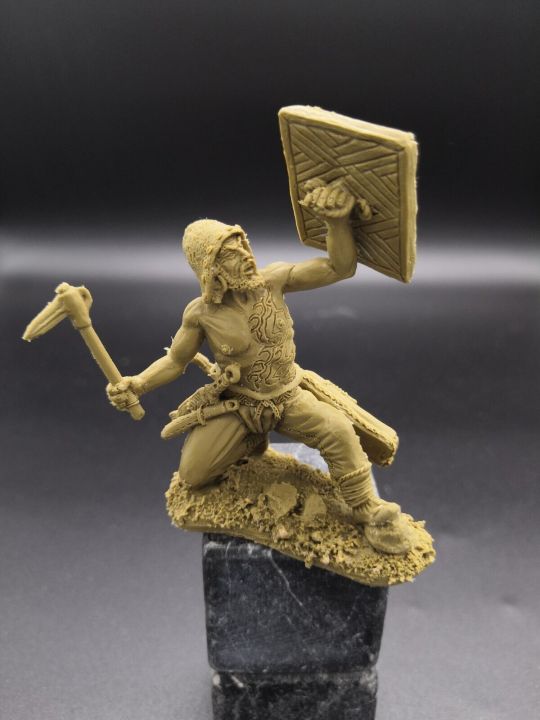


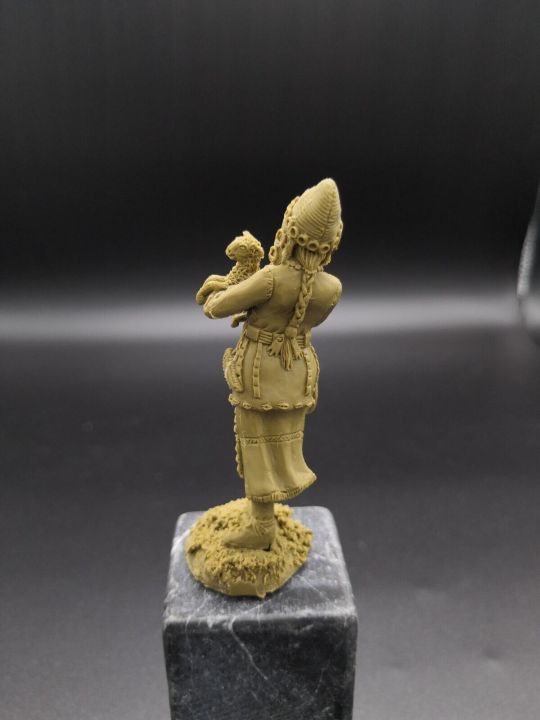






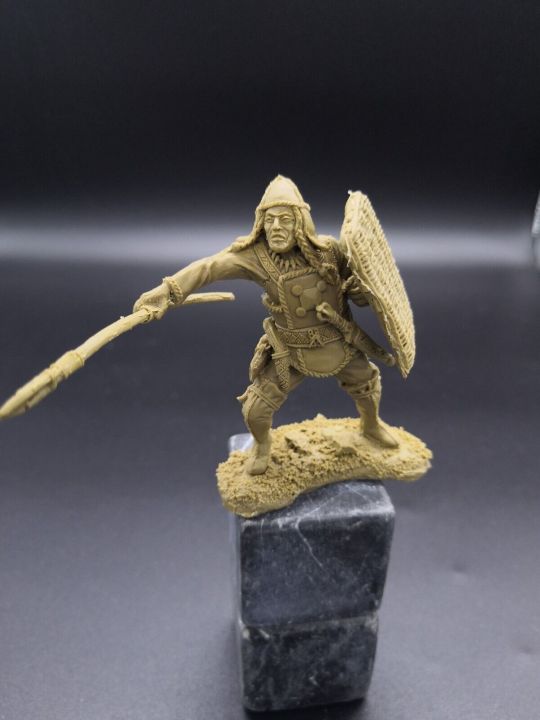

Artwork No. 11 "Nomads" - 1/32
At present, historians studying the cultures of the Bronze Age of Central Asia still have an urgent question about the direction of the spread of technologies for casting bronze weapons of the “Karasuk type”, as well as the question of the origin of the Scythian animal style in bronze objects. In our work, we tried to trace the continuity of the nomadic cultures of the Late Bronze Age in Southern Siberia, Mongolia and Northern China. This story began even before the appearance of the Scythian and Xiongnu tribes.
The set includes 6 figures in a branded designer box: 1. warrior of the Karasuk culture with a bronze spear; 2. warrior-charioteer of the Karasuk culture with a bronze sword; 3. a woman of the Karasuk culture with a lamb; 4. warrior of the culture of deer stones with a bronze chase; 5. warrior-charioteer of the culture of slab graves with a flail; 6. northern barbarian of the Chaodaogou culture with a bow. (aus der Beschreibung bei Ebay)
Der Hersteller ARTWORK bzw. CELOVECHEK stammt aus Russland.
0 notes
Photo







The Scythian Lamb - Daihachi Yoshida
11 notes
·
View notes
Video
tumblr
Ryo speaking Mandarin Part II via Sky Digi Entertainment FB
93 notes
·
View notes
Link
The Scythian Lamb | Hitsuji no Ki (2018)
This title will be released on August 29, 2018.

#jMovie#The Scythian Lamb#Nishikido Ryo#Matsuda Ryuhei#Kitamura Kazuki#Hosoda Yoshihiko#Future DVD Release#jMovie_2018
4 notes
·
View notes
Text

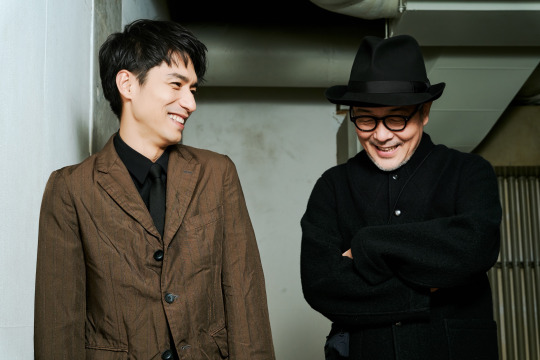

2024.03.01 Nishikido Ryo & Lily Franky interviewed by Oricon —
video version: here
My translation of the interview below. Any corrections are welcomed!
Cottontail, an Anglo-Japanese co-production project by a Japanese cast and up-and-coming British director Patrick Dickinson, will be released in cinemas from 1 January today. This road movie spins a tale of family love and rebirth, moving the stage from Tokyo to the UK. Lily Franky (60) plays a clumsy father who has kept his heart closed, and Ryo Nishikido (39) plays his long neglected son. Although they had known each other privately, this is the first time they have worked together as actors. They praised each other's work.
How did you come to know each other?
Lily: We had a mutual acquaintance and got together at a bar.
Nishikido: Yes, we did. After our mutual acquaintance left first, we continued drinking together. Even though we hadn't met each other before (laughs).
Lily: Then it took more than 10 years until we worked together on Cottontail, didn't it?
Nishikido: I was around 24 when we first met.
Lily: Has it been that long?
Have you talked about working together one day?
Lily: Not at all (laughs). We talk about instruments and music all the time, don't we, Nishikido-kun?
Nishikido: Yes, that's true.
Lily: It's not like we contact each other and go out drinking. But we just met each other naturally, somehow.
How did you feel when this collaboration was decided?
Lily: It was a no-brainer, right? (laughs).
Nishikido: Yes, it was.
Lily: The script reading was done remotely because of the pandemic. Even right before I left for London for the shoot, we were talking about something completely different, like, "I heard you recently bought a guitar." I guess he is not the type of person who talks passionately about his work. He never talked about his enthusiasm. He never shakes hands and says, "I'm looking forward to working with you” on the shoot (laughs).
Nishikido: It's a little embarrassing to express your feelings in that way (laughs). However, I have also seen the movie "Gururi no Koto/ All Around Us," in which you co-starred with Tae Kimura, who also appears in this film, and “The Devil's Path/Kyoakuu” with Takayuki Yamada, I have always watched the films in which you have appeared, thinking, "How nice" or "That is such a sneaky thing to do!”. There is a unique atmosphere that only Lily has. I was genuinely happy to work with such a wonderful actor.
Lily: I've seen the films that Nishikido-kun has been in too, but when I saw this finished film, I thought again, 'Wow, he's amazing'. I wasn't really aware of it when we were filming, but Toshi (Nishikido's character's name) explained to me what kind of family the Oshima family was and the relationship between the father, the deceased mother and the son. Without relying on dialogue or narrative devices, he made us understand his feelings towards his mother and his feelings towards his father by the way Toshi acted. It was amazing.
Nishikido: It was all directed by Patrick.
Lily: Toshi is Patrick, isn't he? He has a lot of thoughts about his father, and I think he really wanted Nishikido-kun to play out his thoughts.
I share the feeling that you mentioned earlier, when I see Lily's films and think “That is such a sneaky thing to do!”. How do you always prepare for your roles?
Lily: If the director tells me to, I do. If I'm not told otherwise, I don't. I was in Daihachi Yoshida's The Beautiful Star (2017), and his next film was The Scythian Lamb (2006), starring Nishikido-kun, and did Daihachi-san ask you, “please do XXX”?
Nishikido: As in preparation for the role? No, he didn't tell me to do anything.
Lily: I was told by Daihachi-san to lose weight. Well, if you're told to do that, you do it. I try not to do anything unnecessary as much as possible, because the worst thing that can happen when you create a role for yourself is that it doesn't match the director's image of you. Besides, and this is serious, I've almost never played a role where I have to wear a tie to work. Maybe the directors and producers don't have that kind of image for me anymore.
Nishikido: I have a stronger image of him in roles where he looks like a nice guy but is actually very bad, or where he smiles in a nihilistic way.
Lily: In a film called Analog (2011), I played the role of a coffee shop master who just quietly brewed coffee, and I heard that many people were misled into thinking that he was going to do something someday, probably because he hardly had any dialogue (laughs).
Nishikido: In the first place, when you offer the role to Lily, you don't need to ask him to prepare for the role, do you? I think it works just by having Lily do it. When Daihachi was directing, I think he thought it would be nice if you looked a little thinner.
Did you have received (any preparation instructions) from the director, Patrick?
Lily: There was nothing from Patrick. He said that the script was just a blueprint and that the script wasn't everything, and it was like he was waiting for what came out of the actors themselves playing their respective roles. I think that's exactly what Nishikido-kun's Toshi is about.
What was the director like?
Lily: Very calm.
Nishikido: He's so gentle.
Lily: Really sweet and very polite. Now that I think about it, director Patrick and cameraman Mark (cinematographer Mark Wolfe) were definitely wearing collared clothes to the set every day. We were shooting in England in the middle of summer (in 2021).
Nishikido: Yes, that's true.
Lily: England has a gentleman image, right? There is something old-fashioned about Patrick. He has a sense of politeness that Japanese people have forgotten. Nishikido-kun is old-fashioned too, but in a slightly different way.
When you say Nishikido-san is old-fashioned, what do you mean?
Nishikido: Am I old-fashioned? I don't know...
Lily: When you went to England, you cooked your own rice.
Nishikido: I did cook for myself.
Lily: Even when I told him that the food catered on the set was "delicious," he would say something like, " I'm fine with this," and eat onigiri (rice balls) that he made himself. Sometimes he even made one for Director Patrick. It was a bit samurai-like in that way.
Do you always bring Japanese food when you go abroad for work?
Nishikido: I do some research before I go, and if there is a Japanese restaurant near the hotel where I will be staying, I don't bring Japanese food with me, but this time I had a quarantine period (5 days) due to the pandemic, and I knew I would definitely want to eat some rice, so I brought some.
Lily: You were trying to eat up all the rice before you returned to Japan.
Nishikido: I ate it all up (laughs).
Would you like to work together again?
Nishikido: Of course! I'd like to play a role that isn't father and son next time, and I'd also like to play father and son again.
Lily: I would love to make a film together. This time we played a very serious father and son, so maybe next time playing a foolish father and son would be good.
8 notes
·
View notes
Text
Andy: we are the eternal unknown soldiers... we can never be known by our true identities, the only company we can keep is our own.... we can never forge true friendships with others.... we are alone, always on the edges of humanity....
Joe, to the rest of his and Nicky’s dinner party guests:

#tog#the old guard#andromache the scythian#joe al kaysani#yusuf al kaysani#nicky di genova#nicolo di genova#kaysanova#joenicky#obv just jokes but i am slightly obsessed with the idea of andy being like 'we must be alone....'#and then nicky and joe being like 'hello we're your new neighbors would you like to come over for dinner?' :)#nicky serving up the lamb: don't mind andy she uh works retail#the rest of the guests: ah that makes sense
831 notes
·
View notes
Text
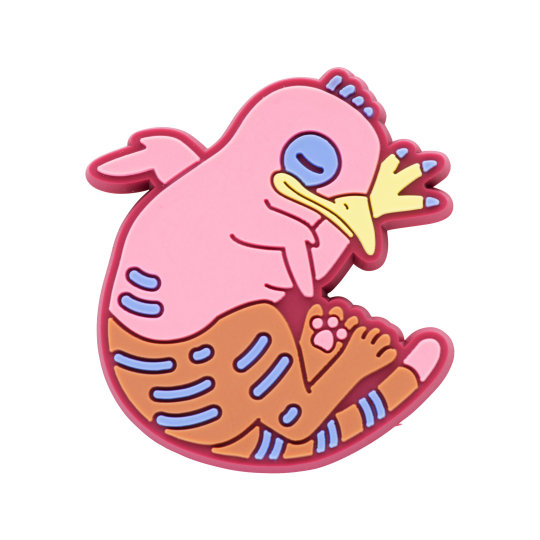

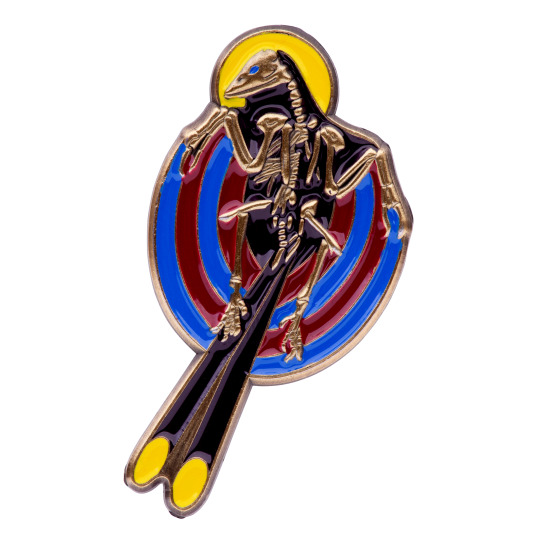

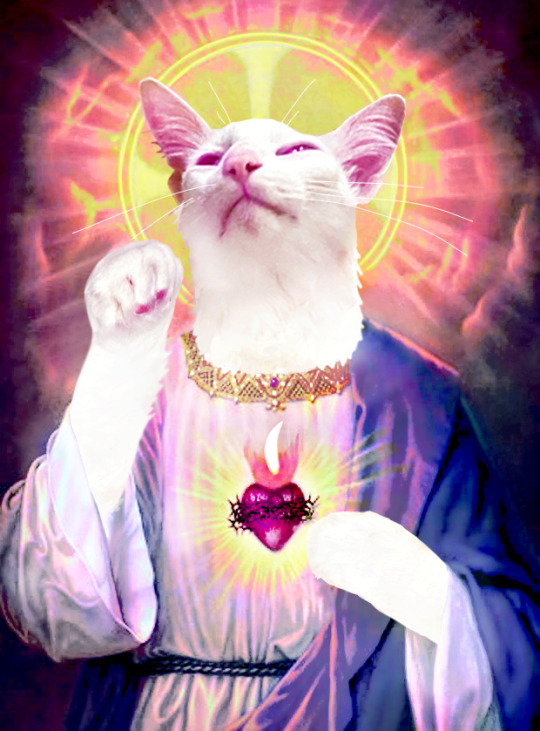
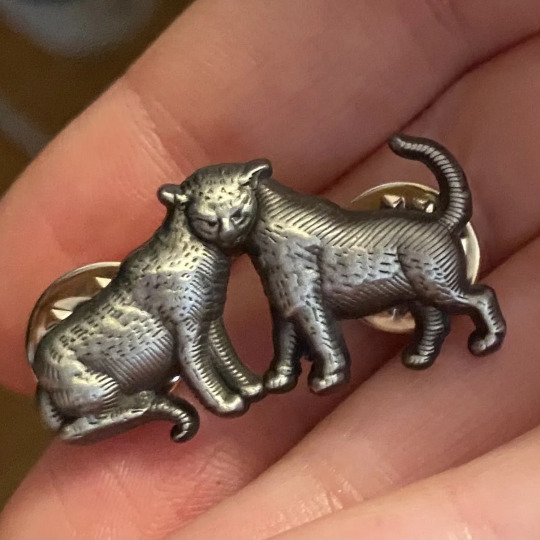
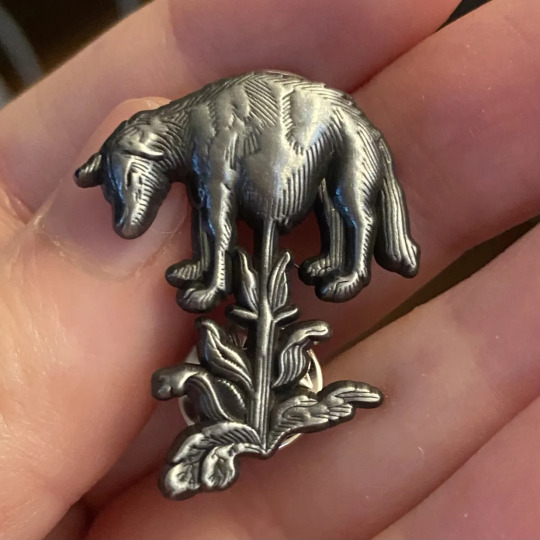


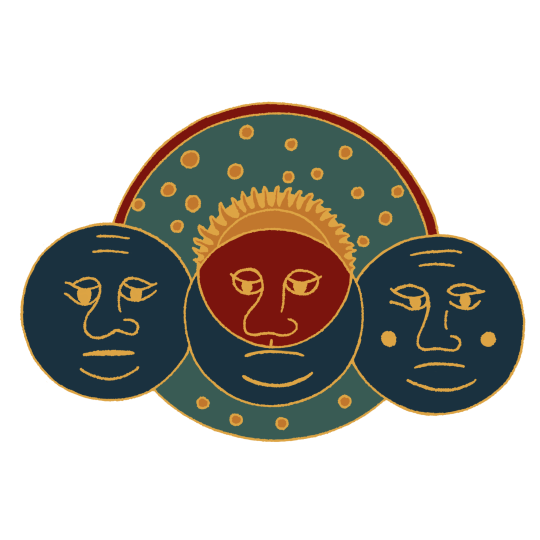
I'm highlighting some stuff that’s low in stock!
Gryphon Chick rubber pin - 8 left
Vaquita enamel pin - 6 left
Confuciusornis 3D metal pin - 11 left
Manticore risograph print - 6 left
Pangur vinyl sticker - 13 left
Conjoined Cat 3D metal pin - 9 left
Vegetable Lamb 3D metal pin - 5 left
Furfur enamel pin- 20 left
Scythian Mummy Tattoo enamel pin - 13 left
Medieval Cosmology enamel pin - 3 left
793 notes
·
View notes
Text
羊の木

なんだろうこのテレビドラマクオリティ。
そしてエンディング...
ちょっといい話やないかい!って気すらしてくるけれど
���っぱりBGMのポンポコポンポコが気になって
ストーリーも登場人物の気持ちも一つとして入ってこない。
錦戸亮氏のちょっぴりリアルな公務員ぷりだけが心に残る、そんな話。
だって松田龍平と北村一輝が出てたらもう人はみーんな想定内でしょうよ。
オロロ様以外は...ということでガッカリ感半端ない
ってことはない、最初からあまり期待できなかったこの作品。
期待通りの映画でした。いや、ジャニーズ同士でも大野くんのアレよりいいけれど。
で、ラスト誰が歌ってるんですか...ごめんなさいその辺り無知で。
最後まで良いところない、そんな作品。
私の邦画の選び方がおかしいんだな最近きっと。
0 notes
Text
Thought I'd watch a movie, started Parasite in Love (komatsu nana), turned it off after 45 minutes :// it looked interesting at first but i didn't like the mc at all and was still confused after half of it where they were even going with Arata's character. I'm getting similar vibes as from Diner and whatever else that director did
So now I started Day and Night (2019), but it's very long so i'm probably going to be watching it for like three days. Masanobu Ando is such a reliable presence tho. He ain't even gotta do anything just stand there like in the first scene he appeared (at the factory) and i'm like yes
0 notes